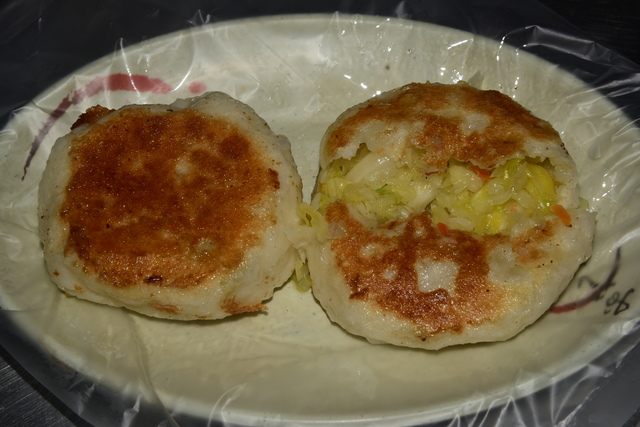Sinwu Pan-Fried Bun Introduction
Cai Xinqi (born in 1951) is engaged in aquaculture, while his wife, Huang Lijiao (born in 1953), worked in a garment processing factory. In 1986, Huang Lijiao quit her job to take care of their children, who were in elementary school, to prevent them from wandering around when they got home from school. To supplement the family income and develop a side business, she learned to make buns and steamed buns from her younger sister, who had participated in community cooking activities. She then set up a stall at home selling water-fried buns and soon added egg pancakes and pan-fried dumplings to the menu. Initially, the water-fried buns were filled with cabbage, pork stew, and scallions. One year, during the worship ceremony at Zhuangmiao Jiaying Temple, everyone in the village had to eat vegetarian, so they changed the filling to just cabbage, which has continued to this day. Since making water-fried buns is labor-intensive, her mother, Su Xueyun (born in 1930), helps with the wrapping, while her father, Cai Dengxuan (born in 1930), assists with frying. The petite water-fried buns are made in a daily fixed quantity of only 120 pieces, and once they are sold out, no more will be made. It's a principle of Xinwen Water-Fried Buns to advise customers to come early the next day if they miss out. The outer skin of Xinwen Water-Fried Buns is made of flour, and the filling consists of cabbage and carrots. The preparation involves mixing chopped cabbage and carrots with seasonings the night before, and the flour is mixed with an appropriate amount of water...





























